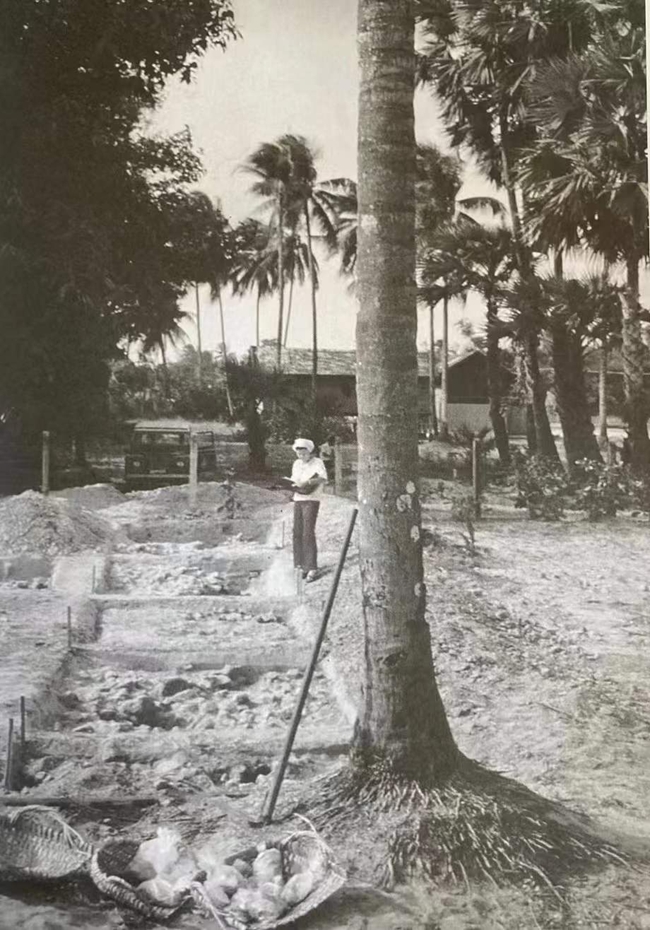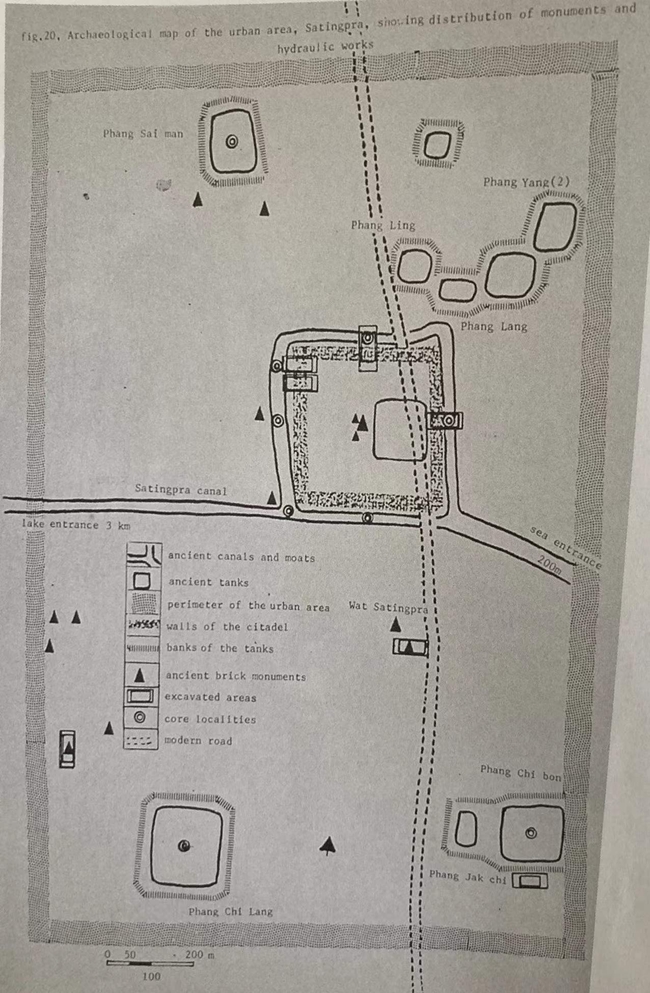来源: 发布时间:2022-02-07 15:56:00
编者按:
2011年11月,由北京故宫博物院、中国古陶瓷学会、福建省文物局、德化县人民政府共同主办的“2011中国瓷都・德化窑学术研讨会”在瓷都德化举办,近百位国内外博物馆馆长、从事陶瓷文化研究的专家学者齐聚瓷都德化,以“中国白的故乡、瓷艺术的摇篮”为主题,共同研讨深厚的德化窑陶瓷文化。
研讨会共提交专题论文39篇,其中不乏外国专家的作品。与会的专家学者以翔实的图文史料为佐证,从学术专业的角度对德化窑在国内外陶瓷文化领域的历史地位和影响做了全面深刻的阐述,是一笔难得的、丰硕的学术成果。
近期,《外国人眼中的“中国白”》栏目将再次回顾刊载该研讨会的相关论文,并对其中的论文进行翻译,为广大德化陶瓷文化研究爱好者提供学习、交流、参考。
Dehua Ceramics in Long-distance Trade in the Song- Yuan period: excavations at Satingpra, South Thailand(四)
Janice Stargardt 翻译:孙延燕
外国人眼中的“中国白”|宋元时期中国远程贸易的德化瓷在泰国南部塞丁普拉遗址的发现(四)
(作者:詹尼斯・斯达加特 翻译:孙延燕)
In the early 7th century, the Emperor Yang-di of the Sui dynasty(reigned 605-17)called for men to go on a mission to Ch' ih-t'u [Chitu, probably Satingpra] to open up trade and diplomatic relations. This dynasty was too short-lived to leave any ceramic traces at Satingpra, but it did produce an extremely interesting textual record of the opulent appearance of the South East Asian court and the diplomatic rituals performed there when receiving an imperial Chinese embassy. An examination of the various names under which Satingpra may appear in Chinese dynastic records has been made. The Tang period is, for the moment, a blank in the archaeological record of trade relations between Satingpra and China, despite the fact that Satingpra came under the influence of Shi-li-fo-q [Srivijaya] from the 8 to the 11 century and San-fo-gi from the 11th to 13th century.
公元7世纪初,隋炀帝(605-17)号召人们前往齐图(疑为塞丁普拉),开启贸易和外交关系。隋朝太短暂,没有在塞丁普拉留下任何陶瓷的痕迹,但是它确实产生了一个非常有趣的文本记录,记录了东南亚宫廷华丽的出现,以及在接见中国朝廷使者时的外交仪式。对塞丁普拉在中国朝代记录中可能出现的各种名称进行的一次调查中,唐朝在中国与塞丁普拉贸易关系的考古记录中暂时是一个空白。尽管从8世纪到11世纪,中国一直受到十里佛齐的影响,而从11世纪到13世纪,又受到三佛齐的影响。
From the mid-10th century for nearly 330 years, the increasing density of Chinese ceramics found in the Satingpra sites reflects the uninterrupted and increasingly specialised two-way trade between Satingpra and China, in which high quality ceramics from China and precious incenses from Satingpra formed the main items. Dehua ceramics were part of that trade from the early Northern Song to the mid-Yuan period, together with Ou, Longquan and Jingdezhen wares of high quality.A declining trajectory in the volume and quality of the ceramics trade can be traced for a further 50-70 years. Thus the in situ archaeological evidence of Sino-thai trade at Satingpra-the incense for ceramics trade-spans a total of approximately 400 years. In the late 13th century, when the peak of quality and quantity of Chinese ceramic sherds was reached, the number of Chinese fine wares and Chinese container jars outnumbered the local ceramics found in the sample areas at Satingpra. This is a diagnostic sign of an archaeological site specialising in long-distance maritime trade (see Table 1 above). The density of all types of Chinese ceramics of the 10th to 13th century found at the Satingpra sites (especially the fine wares)greatly exceeds the deposits of Chinese ceramics found at other sites thought to have formed part of Shi-li-fo-qi and San-fo-qi, namely Palembang and Jambi in Sumatra, but Jambi did receive the same types of high-grade Chinese ceramics as Satingpra albeit in lower density. It also imported fine unglazed ceramics made in the Satingpra group of sites.
自10世纪中叶开始的近330年,在塞丁普拉不断出现的中国陶瓷器,反映了两地不曾中断的贸易往来,且日趋专门化,其中主要的产品为高品质的中国瓷器和珍贵的塞丁普拉香料。北宋初期到元代中期,德化陶瓷一直是中国陶瓷贸易的一部分,与欧窑、龙泉窑、景德镇窑等高品质陶瓷一起。陶瓷贸易数量和质量的下降趋势可追溯到50-70年。中泰两国在塞丁普拉贸易的原始考古证据——陶瓷香料贸易——跨越了大约400年的时间。十三世纪末,当中国陶瓷的质量和数量达到顶峰时,中国陶瓷精品和容器罐的数量超过了在塞丁普拉样品区发现的本地陶瓷。表1是一个专门从事长途海运贸易的遗迹的判断标志(见上文表1)。10至13世纪在塞丁普拉所发现的各类中国陶瓷器(特别是精品)的密度,远远超过其他被认为构成「十里佛齐」和「三佛齐」遗址的发现,即苏门答腊岛的巨港和占碑。但占碑也发现了和塞丁普拉一样的高品质的瓷器,尽管密度较低。它亦进口在塞丁普拉遗址群制作的未上釉的陶瓷。
A further comment on the value involved in the incense trade coming from Satingpra to China will help to contextualise the Chinese ceramics coming into the site. Abundant references in Zhao Rugua’s Zhufan zhi jiaozhu, among many other sources, make it clear that incenses from the Southern region were among the most precious commodities entering the Song economy and the present writer has established that some of the finest and most highly prized incenses came from the forests adjacent to the Satingpra sites, in the Kra Ecotone. The Song huiyao records that in 1156-7 and 1178 missions from San-fo-qi brought 81, 680 catties of incense to the Song court. They had an approximate value of 816,800 strings of cash! This is based on prices in 11th century calculated by Lin T’ien-wei 1960.The San-fo-qi missions presented to the Chinese court incenses, rhinoceros horn and pearls. They were also granted permission to trade in these commodities while in China. Moreover in addition to the consumption at the imperial court, these precious incenses also figured in major imperial gifts to other rulers. For instance on 25 June 1006 the Northern Song emperor ordered a gift of benzoin (in which Satingpra excelled: Table 2 below) and rhinoceros horn to be conferred on a mission from the Xiliangzhou Tibetans.
从塞丁普拉进入中国香料贸易价值的进一步说明将有助于了解中国陶瓷进入该地区的背景。许多其他资料来源,包括赵汝适的《诸蕃志》清楚地表明,南方地区的香料是进入宋朝经济的最珍贵的商品之一,本文作者已经确定,一些最好和最珍贵的香料是来自克拉群落交错带附近的森林。据宋辉耀(音)记载,在1156-7年和1178年间,三佛齐的使者运送81, 680斤的香料到宋廷。他们大约相当于816800串的金钱!这是根据11世纪的价格由林天伟(音)于1960年计算出来。三佛齐的使者将香料,犀牛角和珍珠送给中国朝廷,他们也被允许在中国买卖这些商品。此外,除了宫廷的消费,这些珍贵的香料也是皇室送给其他统治者的主要礼物。例如,1006年6月25日,北宋皇帝下令将安息香(如图2所示塞丁普拉盛产)和犀牛角作为礼物送给西藏西凉洲使者。
Many ancient coastal ports elsewhere in South East Asia reveal short phases of participation in maritime trade involving low-grade Chinese ceramics, especially during the southern Song. Probably only low-value local products in limited supply were traded there causing trade to shift elsewhere after a short time. The evidence from Satingpra suggests a very different trade pattern: one of long duration, involving very high values on both sides. As the greatest concentration of high-grade Chinese ceramics was found in the palace area of Satingpra (Figs.6 and 7), this trade may have been under court control.
东南亚其他地区的许多古代沿海港口,特别是在南宋时期,都曾短暂地参与过低层次中国陶瓷器贸易。可能因为只从事低层次的本地产品贸易,导致贸易在短时间内转移到其他地方。来自塞丁普拉的证据表明了一种非常不同的贸易模式: 一种持续时间很长,高价值的双边贸易。由于高等级中国陶瓷器在塞丁普拉的宫廷地区有密集的发现,这种贸易可能受到官方的掌控。

Fig.6, destruction layer of the palace at Satingpra, Dehua ceramics in bags in foreground
图6,塞丁普拉宫殿的破坏层,德化陶瓷在前面的袋子里。

Fig.7, Urban area of Satingpra showing citadel at centre surrounded by walls and moats. A temple, 2 shrines and a sacred pond occupied the centre of the citadel. The palace was to the north of the temple
图7,塞丁普拉的城市区域,显示城堡在中心被围墙和护城河包围。一座庙宇、两座神殿和一个圣塘占据了城堡的中心,宫殿位于寺庙的北面。
下一篇:郑建忠:“福”虎生威 贺岁新春